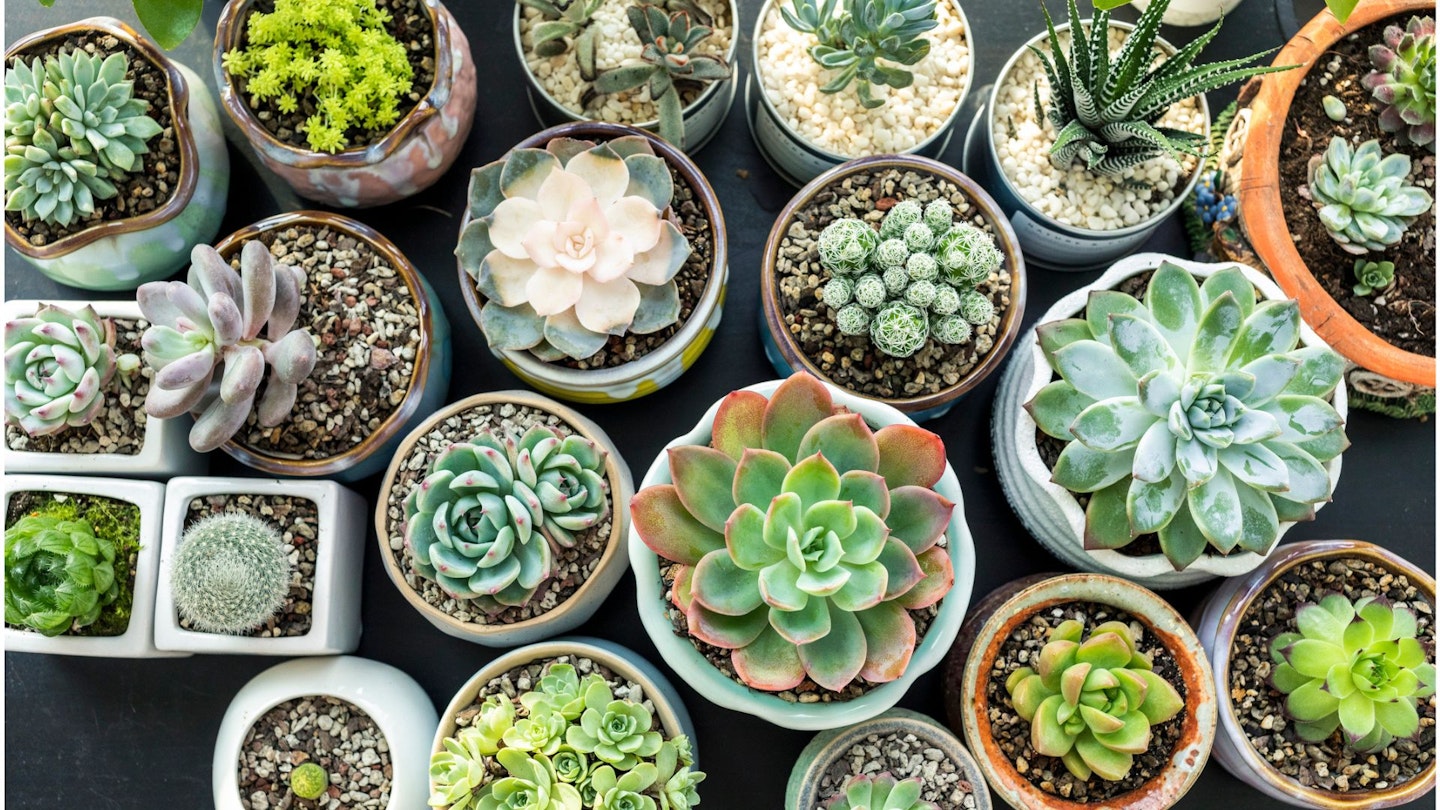Brits love the best houseplants - and are spending more money on indoor foliage than ever before, according to a poll of 2,000 people commissioned by Miracle-Gro, which states it's around £300 a year. So if, like us, you have caught the houseplant bug and want to know everything there is to know about the best indoor houseplants for your home, we've recruited the help of Modern Gardens expert Jules Barton-Breck and Garden News contributor Marc Rosenburg to help us pick.
Whether you are looking to add more greenery to your home - or have an indoor oasis - the best plant subscription boxes could be the way forward for you or an indoor gardener in your life. From the best bonsai plants to nature's air purifiers, we are here to help you find the best house plants for you.
Best house plants at a glance:
• Best indoor plant air purifier: Zamioculcas zamiifolia - View on Thompson Morgan
• Best indoor hanging plant: Hoya linearis 'Wax Flower' - View on Crocus
• Best Toughest Indoor Plant: Sansevieria 'Mother-in-Law's Tongue' - View on Crocus
Most houseplants are toxic to cats and dogs, so position them out of the way if your pets are curious nibblers. Many of these on-trend houseplants are easy to look after. Plus, they will look great in your home office or bedroom, so fill your house with greenery and relax!
When we think of plants, we tend to look to a standard plant pot that we can sit on the kitchen counter or the middle of the table, but there are so many versatile ways to include plants in your home. Here are our top picks.
The best indoor houseplants for your home
Best indoor plant air purifier
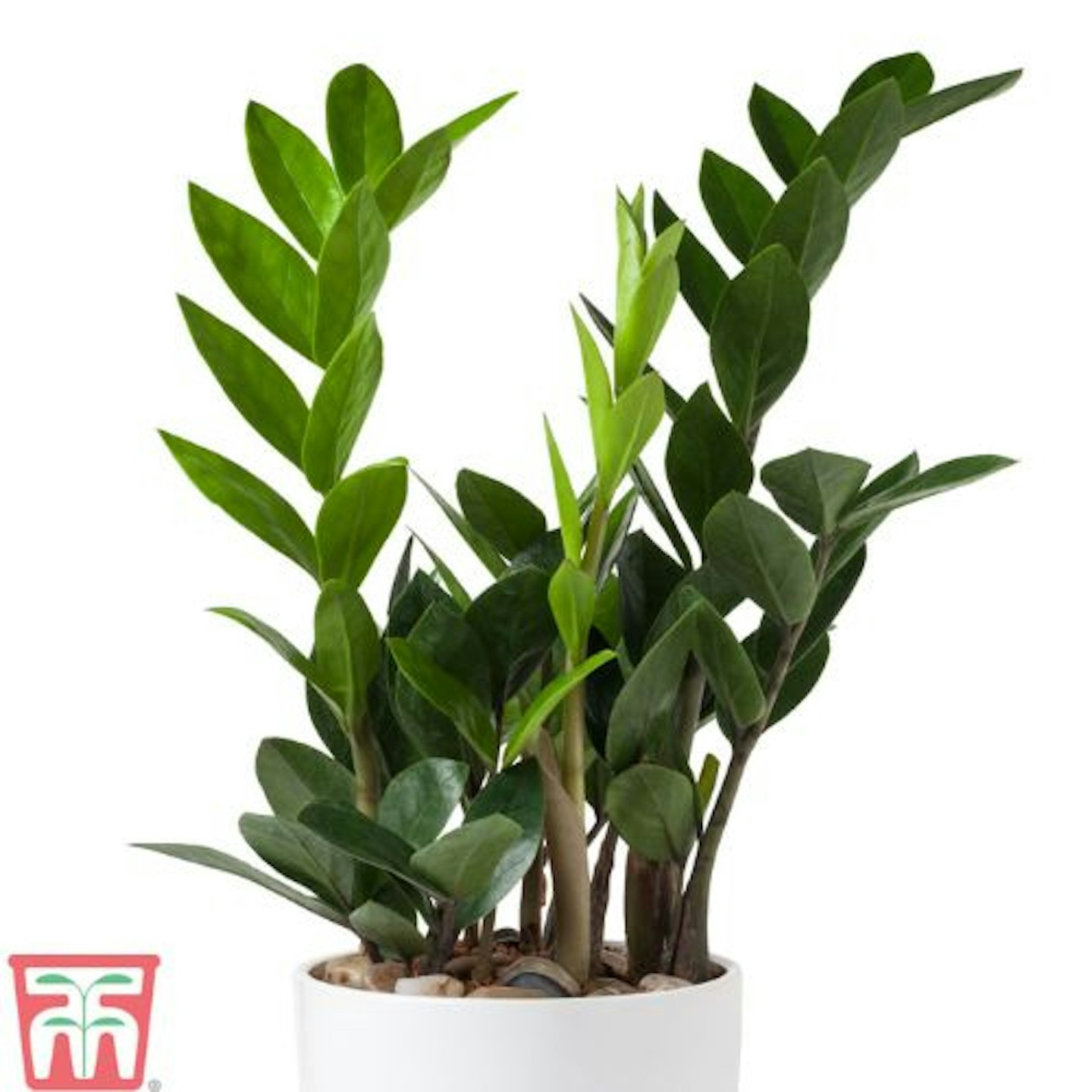
www.thompson-morgan.com
This cool-sounding houseplant, Zamioculcas zamiifolia, isn't just a beauty, in fact, studies have shown it's great at removing toxins from the air. So, it'll do wonders for your home. Plus, it won't be too miffed if you neglect it for a while. If a glossy leaf turns yellow, just cut it off at the base of the stem.
Care:
Placement: Exposed to bright light but away from direct sun
Water: Water sparingly between spring and autumn, reduce in winter
Temperature: Warm room, between 13 and 26°C
Customer Review: "Lovely and easy to look after."
Pros
- Low maintenance and easy to grow
- It's great at removing toxins from the air, improving the air quality in your home.
Cons
- Specific placement
Best Indoor Plant Fabulous Foliage
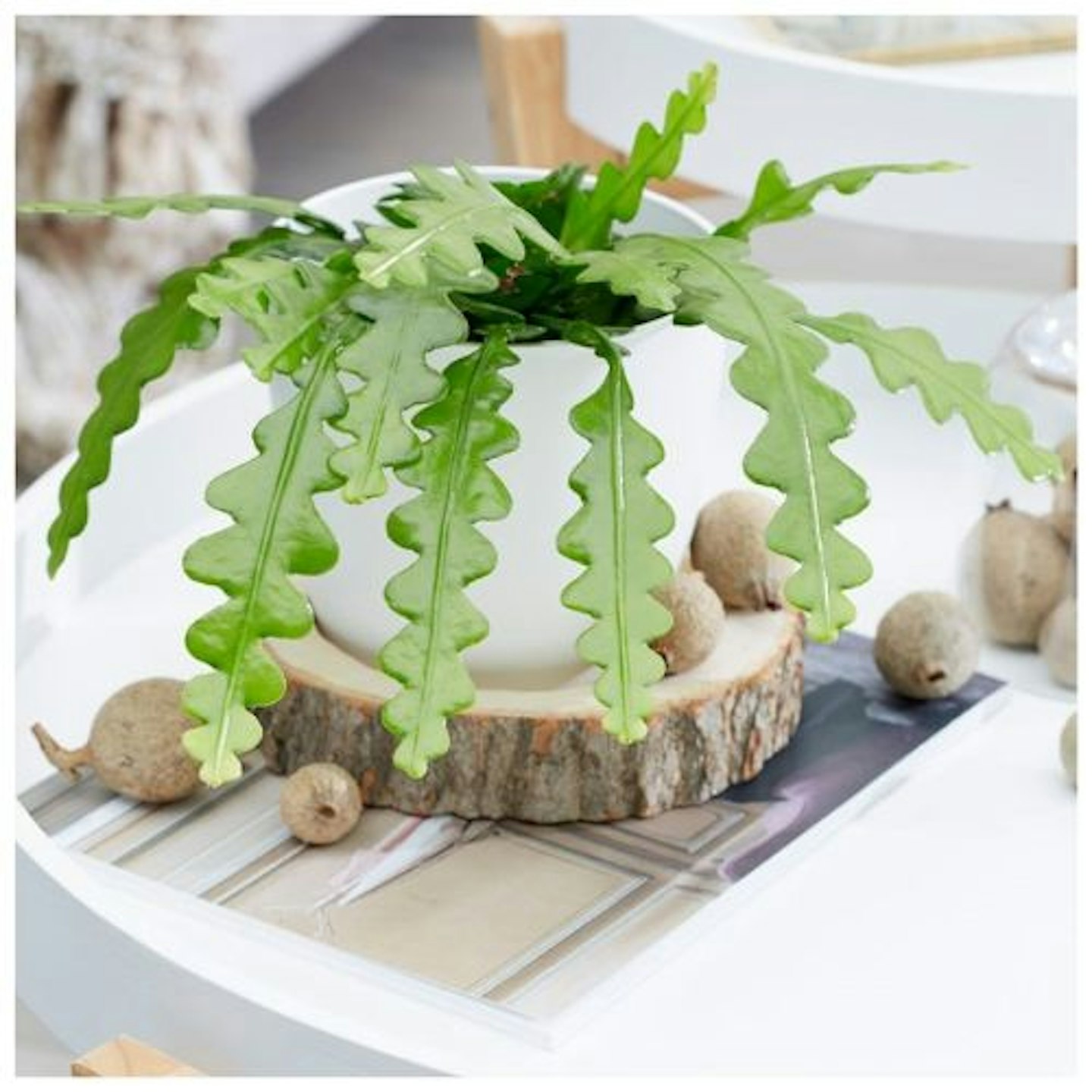
www.waitrosegarden.com
This fishbone cactus gets its name from the shape of its skeleton-shaped leaves. Aren't they awesome? Though it's a bit slow to grow, this plant doesn't need much water. Simply pop it in a bright spot and water it when the soil gets dry. Then, cut back on the watering when autumn and winter roll around – but don't let it dry out. It may even produce some flowers if the conditions are optimal.
**Available to order from late summer
**
Care:
Placement: Bright but indirect light
Water: Very little; Cut back on the watering in autumn and winter
Temperature: Avoid humidity, open a window in warmer months
Pros
- Doesn't require much maintenance or water
- Interesting foliage
Cons
- Slow growing
Best Indoor Plant Easy to Grow
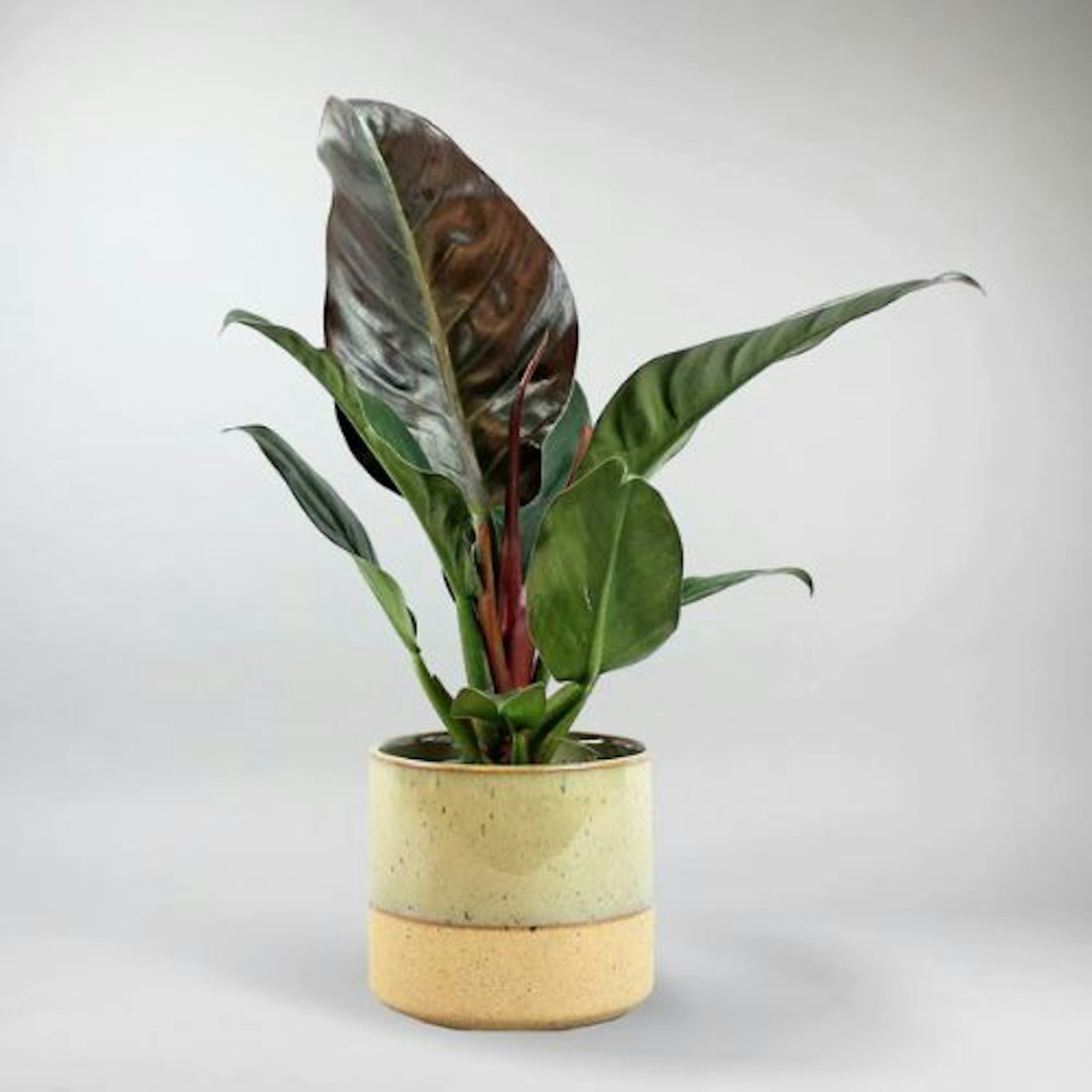
bloomboxclub.com
Next, we have this unusual plant. Striking, this philodendron variation is known as the 'Imperial Red'. Coming with large, leathery leaves, this indoor houseplant boasts an attractive glossy sheen. But keep it away from bright sunlight and allow it to dry out before you water it. Remember to mist!
Care:
Placement: Likes a position but not full sun
Water: Allow to dry out before watering but mist the leaves regularly
Temperature: A warm environment is best. I'll suffer if I'm in a room below 12°C
Customer Review: "I have ordered a few times from Bloombox - plants and pots for our offices in London, Leeds and Birmingham. The plants arrived on time, well packaged and healthy. The customer service is responsive. Would definitely recommend it."
Pros
- Pretty
- It's known for being easy to grow
Cons
- Needs some extra maintenance
Best Indoor Hanging Plant
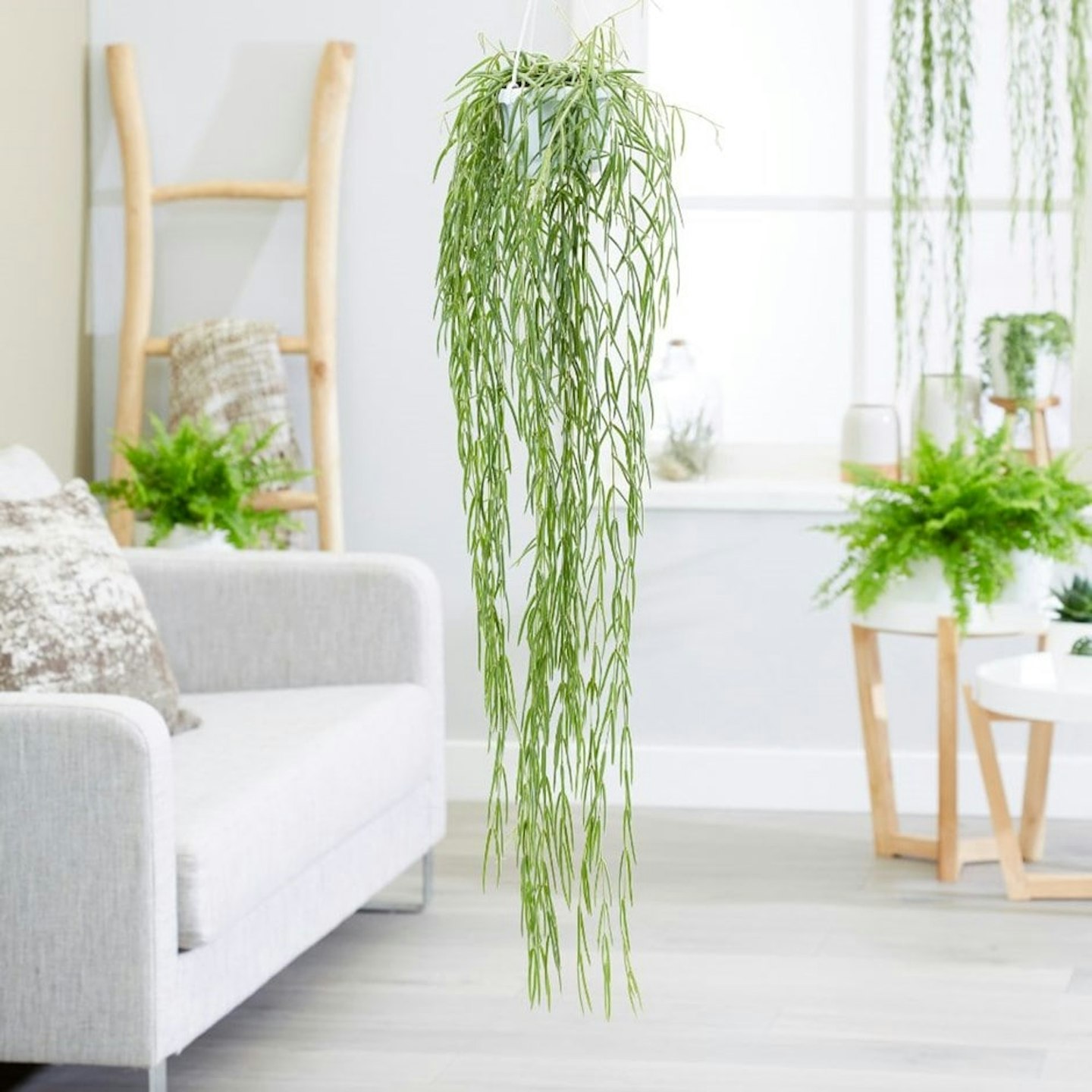
www.crocus.co.uk
If you want something for your ceiling and display, fix a hook in your home and display this beauty. This 'wax flower' or Hoya linearis is a great plant to keep. As for water, keep the soil moist but not waterlogged. If you give it enough light, it'll reward you with clusters of sweetly scented flowers.
Care:
Placement: Place with bright, indirect light
Water: Keep the soil moist but not waterlogged
Temperature: Maintain temperatures above 10°C in winter
Customer Review: "Really impressed with this Hoya. A healthy, full plant arrived in immaculate condition. The longest stem is 85cm! Super happy with my purchase."
Pros
- Sweetly scented
- It's a great hanging plant, perfect for adding greenery at different levels in your home
Cons
- Needs a good amount of light
Best Indoor Plant For A High Shelf
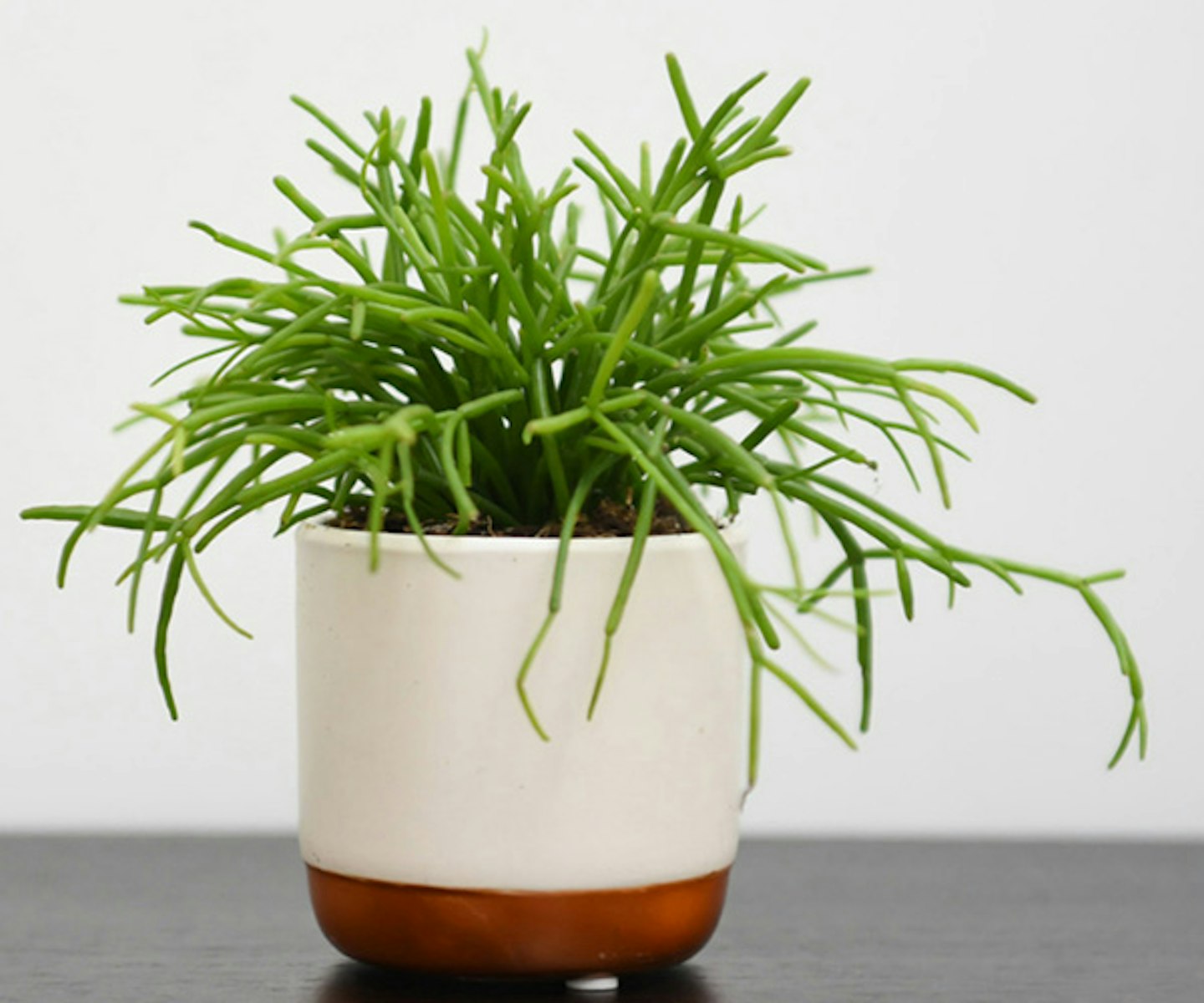
www.dobies.co.uk
This mistletoe cactus will be happy in a corner that doesn't get too much direct sunlight. Even better, it'll let you know when it's thirsty because its leaves will become floppy. Dramatic! However, this one comes with some care requirements, which include dusting to unblock pores on the leaves. If any of the stems are damaged, trim them with a clean, sharp knife. This Rhipsalis baccifera would look great as a hanging plant.
Care:
Placement: Corner placement with no direct sunlight
Water: Regular - it will let you know when dry
Temperature: 16-27° - and keep the humidity up
Customer Review: "Very healthy plant, no damage in transit and it was packaged very carefully with ample space in the box. It does really well on one of my higher shelves too that's a bit more in the shade, easy to keep and great to look at! Would definitely recommend this seller."
Pros
- It'll let you know when it needs some water
- It's happy in a corner that doesn't need to get too much direct sunlight
Cons
- Needs some extra care and maintenance
Best Indoor Spider Plant
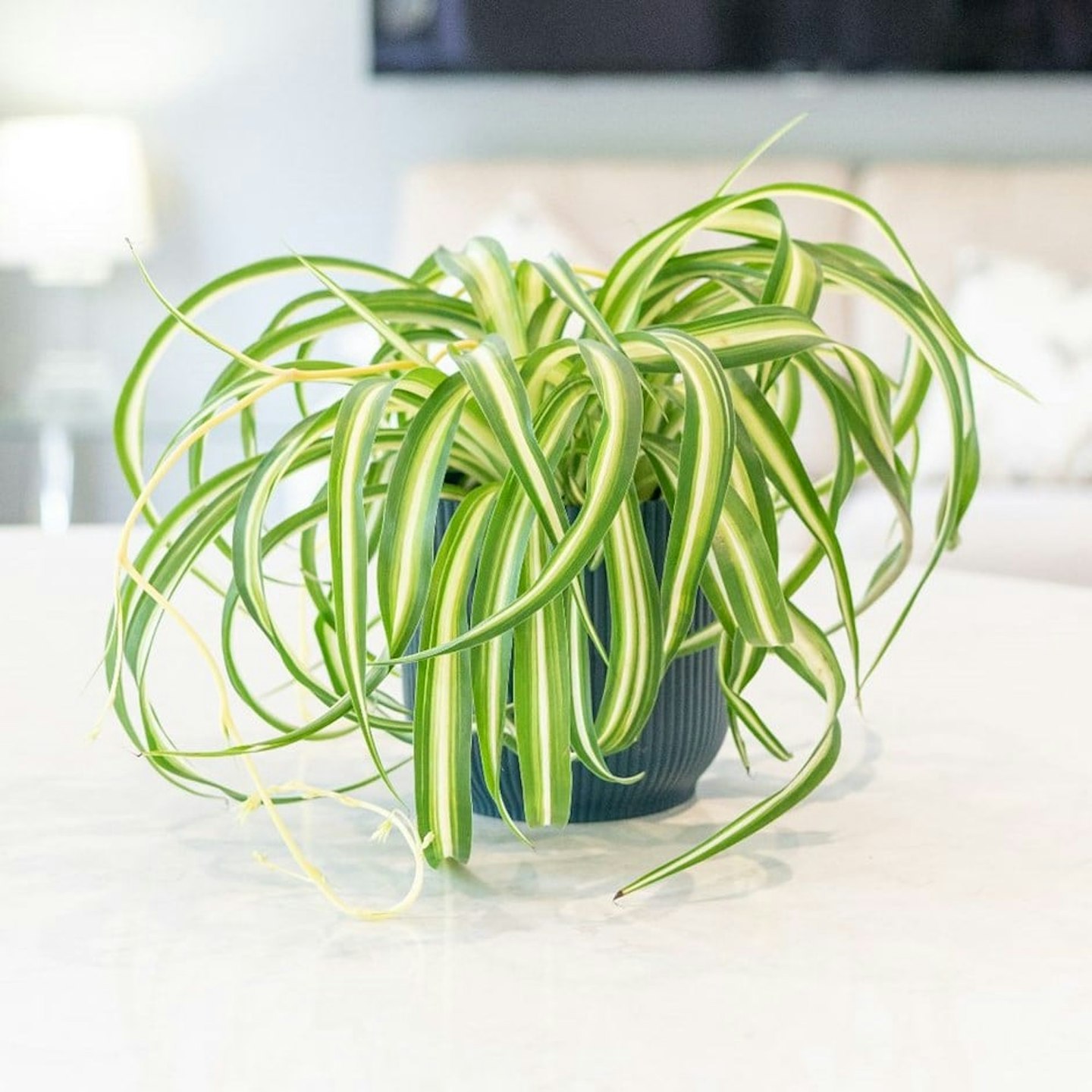
www.crocus.co.uk
Have you ever fancied a spider plant? Give this snazzy variation a go. Its posh name is chlorophytum (or 'Bonnie'), and is a compact option for your home. When kept in optimum conditions, this curvy houseplant produces pretty yellow flowers. Keep it well-watered, though.
Care:
Placement: Bright but indirect light
Water: Water freely when in growth, but keep drier in winter; Mist every so often
Temperature: Make sure the winter temperatures stay above 8 degrees
Pros
- Produces pretty, yellow flowers
- It's a compact option, making it suitable for smaller spaces.
Cons
- Needs to be well-watered
Best Toughest Indoor Plant
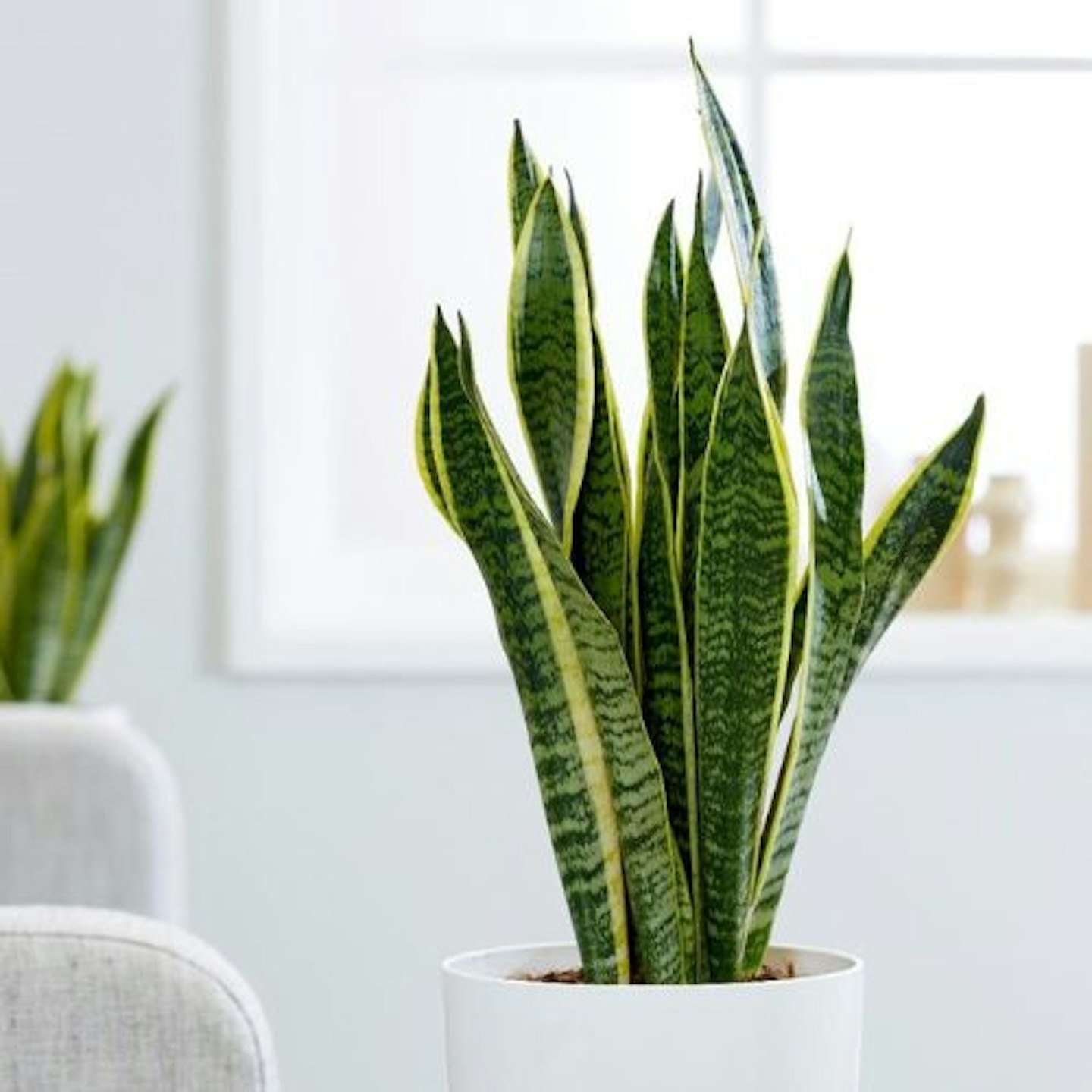
www.crocus.co.uk
Punky, with spiky foliage, this sansevieria is happy to be placed in the sun. But, this 'Mother-in-Law's Tongue' could work in a dark bathroom or hallway, also. It could brighten up any space! And – another plus – it can be watered every one or two months, ideal for those of us who forget to water.
Care:
Placement: Ideally bright, with some full sun, but will also tolerate shade
Water: Doesn't need much watering – you can leave it for a bit
Temperature: Tolerates anything between 20 and 30°C
Customer Review: "I have had one of these for over two years now and it's one of the toughest houseplants. It puts up with neglect and it has grown a fair bit in those two years, too."
Pros
- Tolerant and versatile
- Good in the sun and some shade
Cons
- Slow growth
Best Retro Indoor Plant
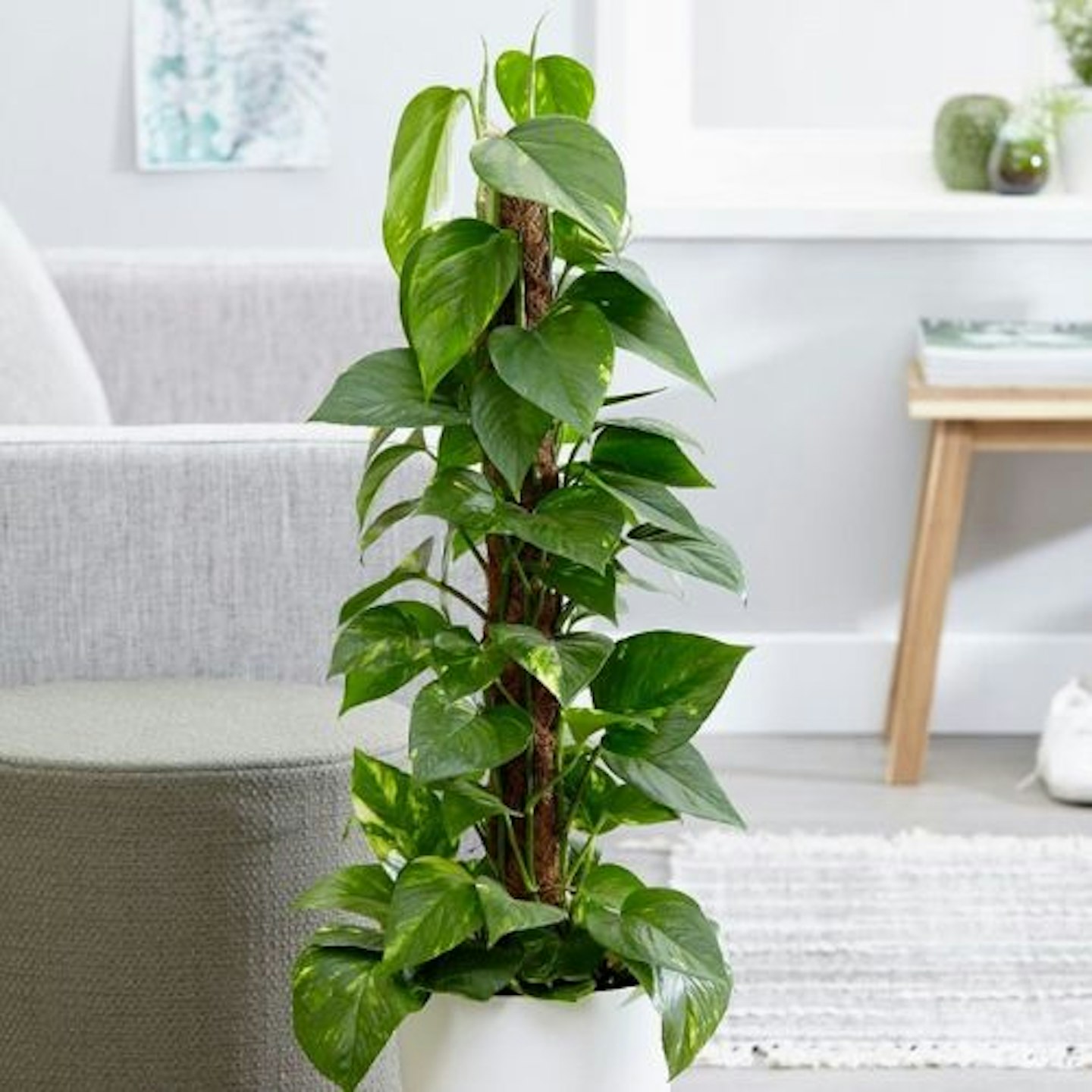
www.waitrosegarden.com
Believe it or not, Devil's Ivy is having a resurgence. With its variegated glossy leaves, it looks great in a hanging pot, on a shelf or mantelpiece or even trained up a wall. Resilient, it's happy to grow practically anywhere and just likes a bit of water when the soil gets dry. Easy to keep but needs a little extra maintenance every now and then. Don't forget to re-pot every few years.
Care:
Placement: Avoid draughts, bright filtered or indirect light
Water: Water relatively freely when in active growth, making sure the compost dries out in-between, but keep drier in winter
Temperature: Make sure the winter temperatures stay above 10°C
Pros
- Filters and purifies the air
- It's resilient and looks great in a hanging pot, on a shelf, or even trained up a wall.
Cons
- Needs extra maintenance – like washing off the leaves in the shower
Best Easy-To-Grow Indoor Plant (Editor's Pick)
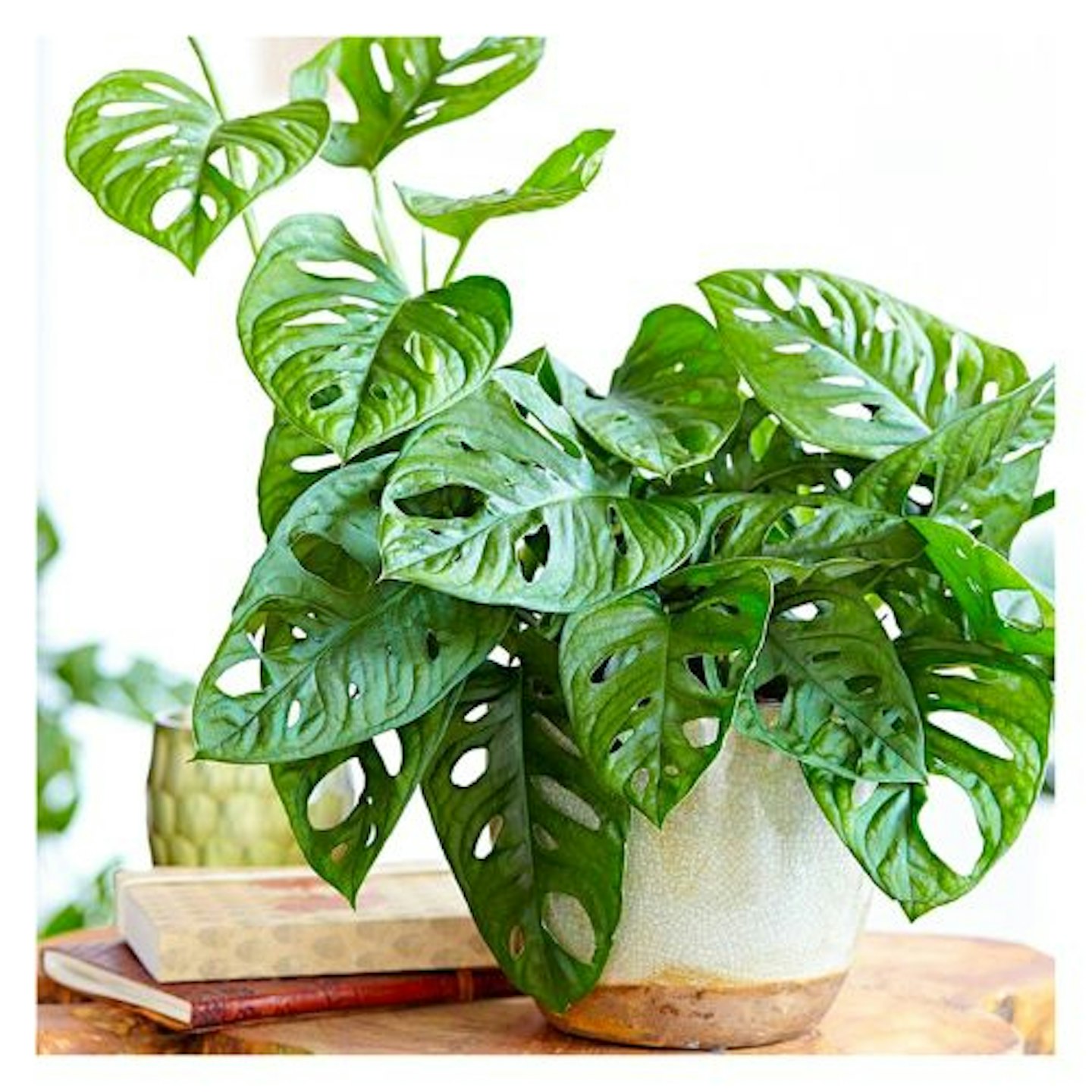
www.etsy.com
The Monstera monkey palm is just as easy to grow as its cousin – the favourite Swiss cheese plant. But this variation looks way cooler, especially when it's displayed in a chic wicker pot. Don't you think so? As for care, you need to water once a week and give the leaves a spritz in warmer months.
Care:
Placement: Keep it out of direct sunlight, ideally in a bright spot
Water: Once a week, give the leaves a spritz in warmer months
Temperature: It will be OK with anything above 10º
Customer Review: "Plant was in amazing condition with new leaves unfurling. Large plant for the price. Very happy thank you! After a couple of months, a new leaf has started to unfurl that gas spontaneous variegation it looks like it will be an albo leaf thank you so much!"
Pros
- Easy to grow
- It has a unique leaf design that adds an interesting aesthetic to your space
Cons
- None
Best Indoor Plant Easy Care
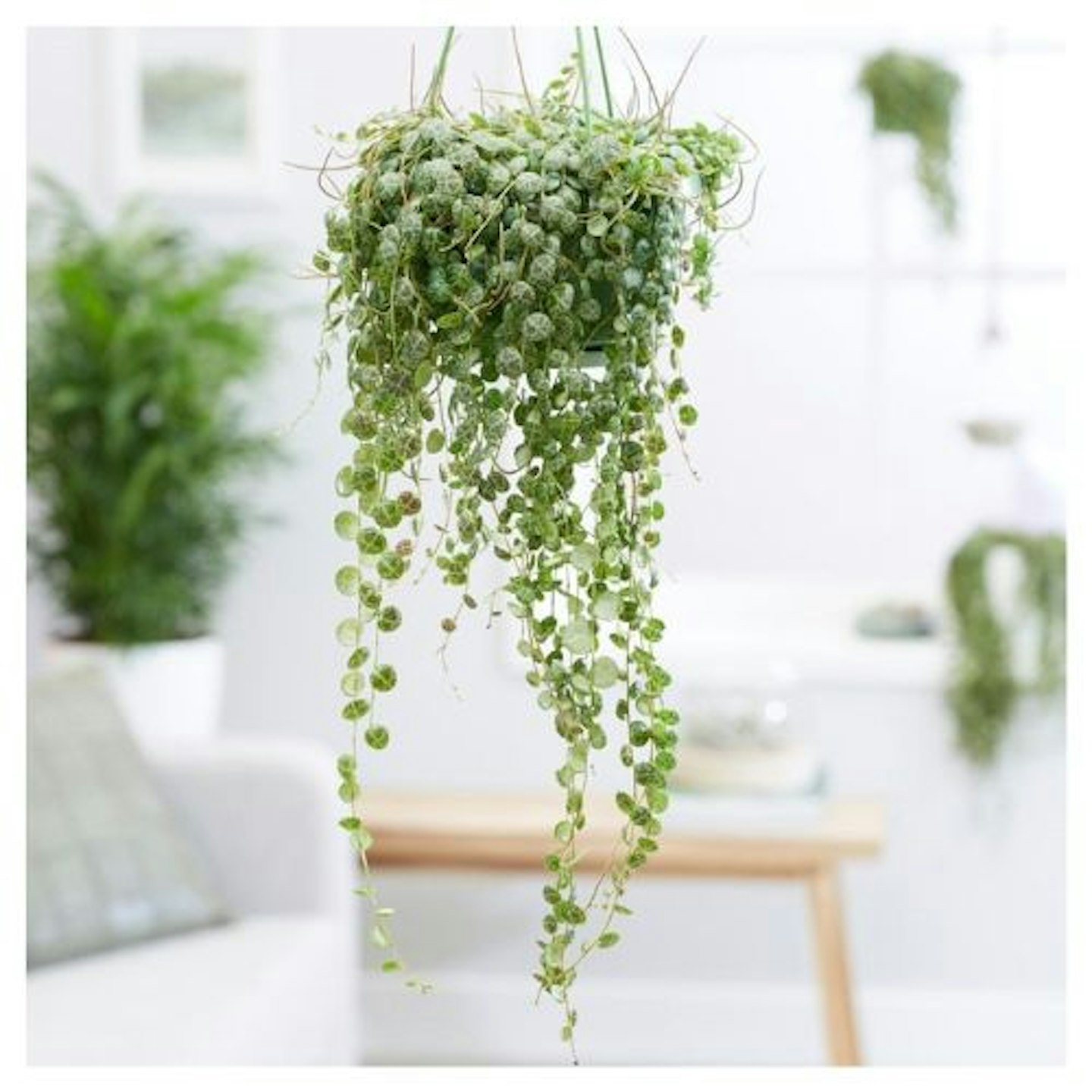
www.crocus.co.uk
The Round Leaf Peperomia (also known as the Turtle Shell Plant) may look delicate, but it's a tough cookie. Easy to look after, you only need to water it when the soil dries out. Position it on a high shelf in semi-shaded light where it can trail over. Make sure to take it down before you water it.
Care:
Placement: Keep it in a semi-shaded or bright spot with protection from direct sun
Water: Water moderately in summer - allow drying before watering again. Water sparingly in winter
Temperature: Maintain temperatures above 10°C in winter
Pros
- Easy to grow
- Low maintenance
Cons
- Recommended to take hanging plants down to the water in the sink or on a saucer
Best Unusual Indoor Houseplant

www.etsy.com
Though this Senecio rowleyanus is known as the String of Pearls, this plant looks more like a string of green peas. It's a very unusual plant, and we love it because it's not a demanding succulent and will cascade over the edge of its pot stylishly - if hung up in a bright position. Make sure to check the soil every now and, if it's dry to the touch, give it water. You can buy cuttings – or potted here.
Care:
Placement: Adaptable – grows best in a partially sunny spot
Water: Water moderately in the sun, sparingly when in shadier spots
Temperature: Minimum temperature is 5°C
Customer Review: "I can't believe how quick this arrived! Shipping the same day of purchase and received the next day. The plant itself was in perfect condition and has made a lovely addition to my bedroom! Thank you."
Pros
- Not very demanding
- It has a unique string of green pearl-like leaves
Cons
- Needs different care depending on placement
Best Indoor Plant for Winter
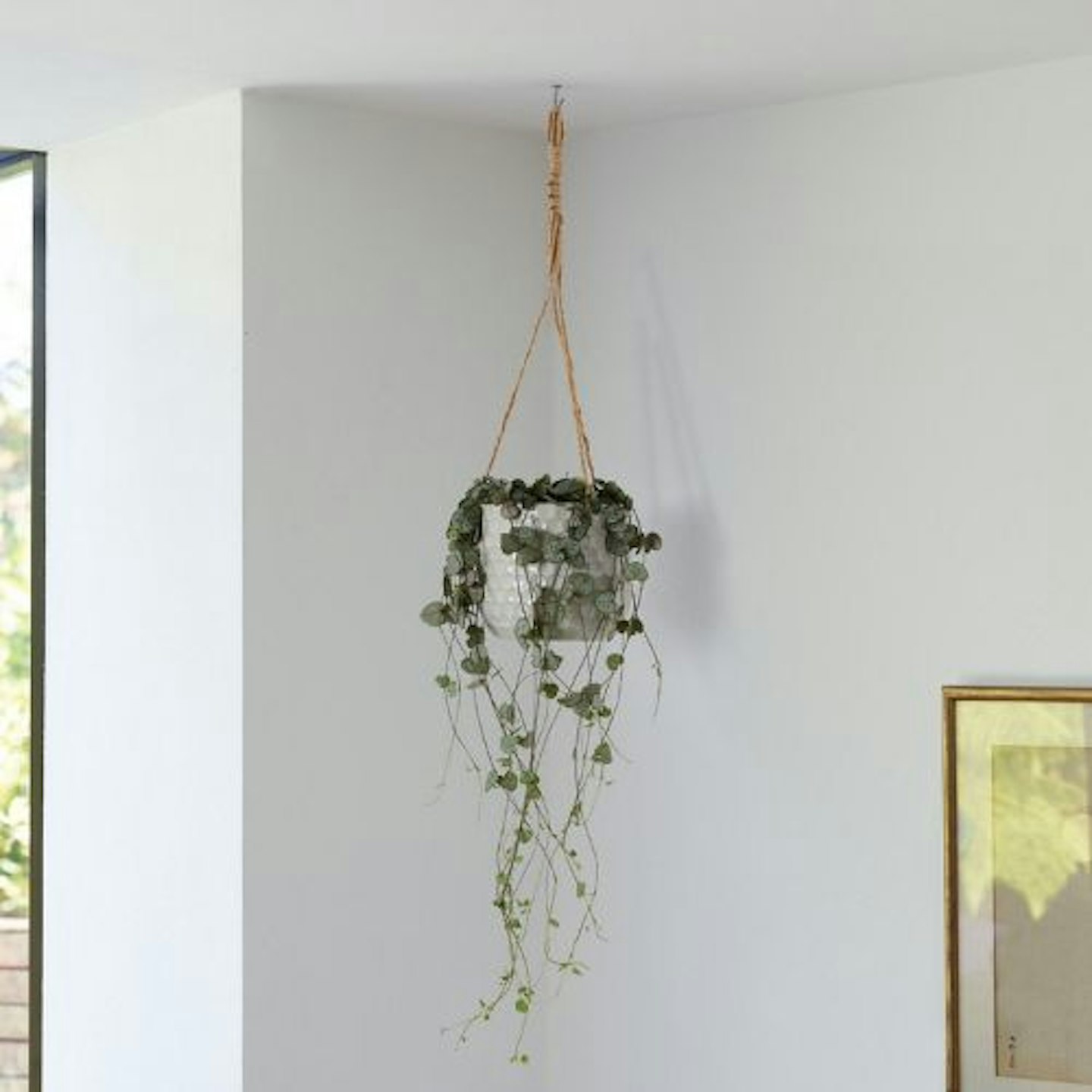
www.etsy.com
Ceropegia woodii (String of Hearts) is a perfect house plant: it prefers average room temperatures, bright light but not direct sunlight, and infrequent watering. Pop it up on the ceiling or on a shelf and let it drape down. It's bound to brighten up any space. Colours vary slightly, seasonally.
Care:
Placement: Up high, with bright indirect light
Water: Water thoroughly whenever the compost begins to dry out. Water very sparingly in winter
Temperature: This plant loves to be warm, with a preference for 15-25°C
Customer Review: "Arrived in perfect condition and looks great hanging in our bathroom."
Pros
- Very pretty
- Easy to manage
Cons
- Remember to take this plant down to water - and to let it drain before popping it back up
Best Indoor Plant For Beginners

www.marksandspencer.com
With its bold leaves, this large, patterned calathea would make a great addition to your home. Even so, why not make it a gift? It's sure to add style and greenery to any space. This popular indoor plant is relatively easy to care for, making it a perfect present for gardening beginners and experts alike.
Care:
Placement: Bright but not in direct sunlight
Water: Keep soil moist but do not overwater
Temperature: Keep above 15°C
Customer Review: "All good.. Efficient delivery and kept well informed... Thank you."
Pros
- Easy to care for
- Pretty foliage
Cons
- Grows large, not great for a desk
How do I buy healthy houseplants?
Marc Rosenburg says: "Overwatering, inadequate light and failure to re-pot are three of the most common causes of house plants keeling over. It's possible, however, that the rot set in before the plant left the store."
So, here's a checklist of the warning signs to look for when scouting for a new houseplant.
• Leaves – are a hiding place for sap-sucking insects. So, check the underside for this. Plus, leaf yellowing can be caused by pests or nutrient deficiency.
• Flowers – are beautiful, yes, but take heed. Avoid the temptation to buy flowering plants where all blooms are at their pretty primes. To clarify, a healthy supply of buds is more valuable.
• Roots – growing out of a pot's drainage holes in excess indicate that it's pot-bound.
• Compost – is something else to take a look at. Why? Gaps between the growing medium and the inside of the pot can tell us that the rootball has dried out.
More of your questions have been answered below. But, first…
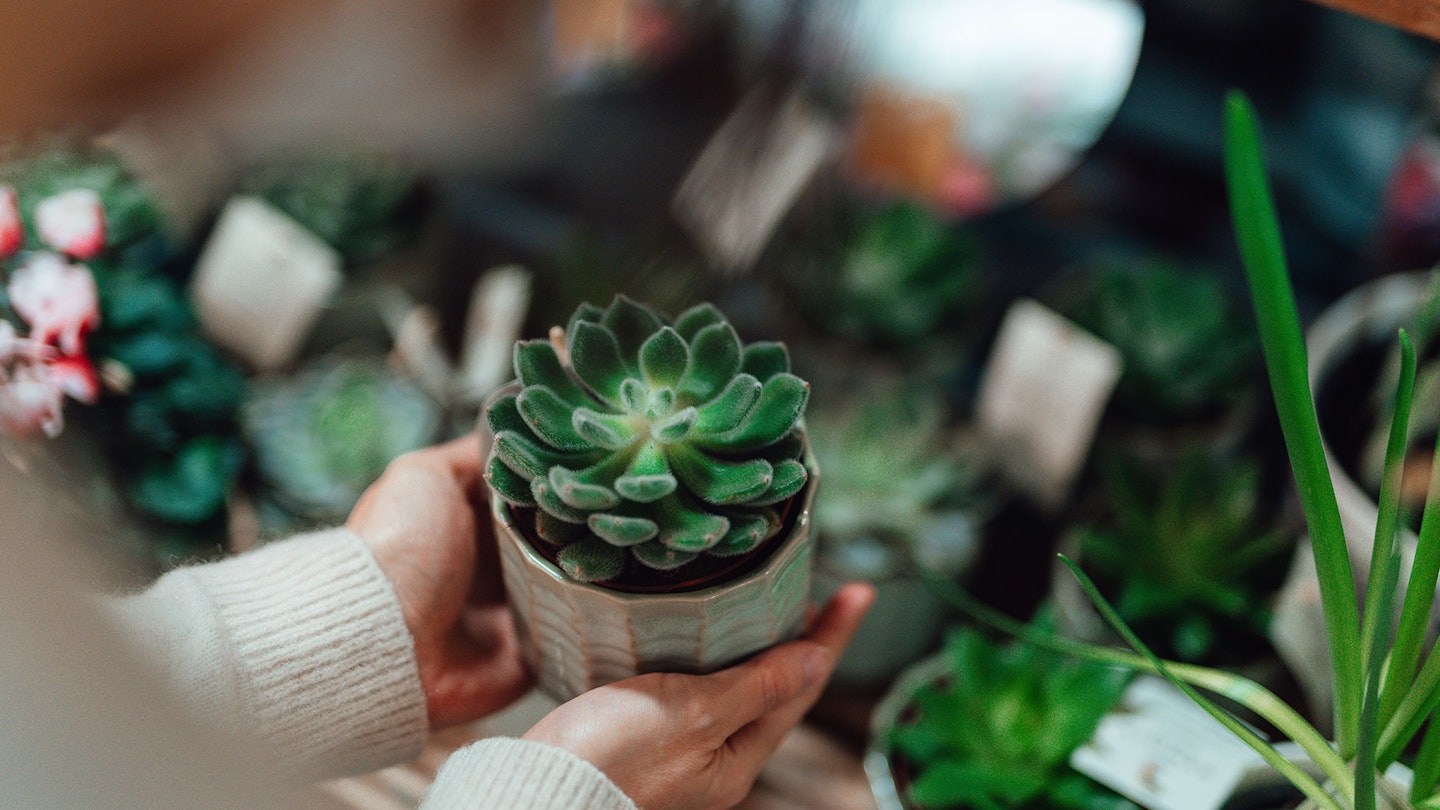
How do I keep my indoor plants happy?
Miracle-Gro's survey also reported that almost half of adults had killed an average of five indoor plants. So, we've got a plan of action for those who want to keep their indoor plants through autumn, thanks to Marc.
Foliage
Think of your indoor houseplants as furniture. They all need good dusting from time to time. Unfortunately, dust can affect your plant's photosynthetic properties when light levels are low. So, Marc's advice to help is to wipe the leaves "with a damp cloth or a moist ball of cotton wool."
Light
We all know how much our plants love the sunshine. But, believe it or not, houseplants are different. Though it varies from houseplant to houseplant, they will generally like a bright placement out of direct sunlight. Marc adds: "Healthy plants thrive in even temperatures, [so] avoid extremes."
Re-potting
Have you got a fancy pot perfect for an indoor houseplant? You should Leave re-potting until spring unless your indoor plant shows signs of distress from being pot-bound. If you're worried, Marc advises a bigger pot and loam-based compost to "ensure the root ball is moist before re-potting."
Pests
There's no doubt we've all been acquainted with pests. Outbreaks of insects, such as aphids, spider mites and mealybugs, are common in the colder months. So, you need to take action to avoid any lasting damage to your indoor plants. For this, you can put some soap in your spray bottle (or mister) or use Ecofective Houseplant Bug Control, which Marc has recommended.
Water
You shouldn't be overwatering your houseplants. In fact, letting them dry out a little is the best advice. For example, a pot of moth orchids (phalaenopsis) should only be watered every 10 days. Isn't that interesting? So – your indoor houseplant will thank you for keeping them dry. However, this isn't a one-size-fits-all approach. Make sure to read up on your new houseplant before you water it.
Humidity
When homes are heated centrally, low humidity is common. Unfortunately, this can result in the leaves turning brown and falling – which is not what you want. To combat this, Marc suggests creating a "humid microclimate" by misting foliage regularly. It really works.
Windowsills
During the summer, your houseplants may have happily sat on a sunny windowsill. However, as the nights grow colder, things could get tough for your plants. As temperatures drop during frosty winter nights, your plant will begin to dry out. Plus, curtains are closed, and radiators may be on. So, all of this may create a dry atmosphere for the plant. Marc suggests moving your plants for the autumn.
Washing
Did you know that larger foliage plants – such as the peace lily – can become caked in dust? As we mentioned before, your plants may need a little cleaning from time to time. However, getting larger houseplants clean can be an issue. So, Marc suggests giving them a gentle rinse with a shower head – and setting the water to a low temperature.
Feeding
From Easter until September, most indoor plants should have some liquid fed fortnightly when growing. This fertiliser should be balanced indoor plant food. For those plants that flower, use high-potassium feed, also. Marc says to "ease off feeding now unless a plant is in full flower".
FAQs
Are cacti different to other houseplants?
As wonderful as they are, cacti are a little different from regular houseplants. So they need extra special care.
Cacti love to be in a hot environment – like a conservatory or porch. However, Marc suggests bringing them indoors before temperatures lower. Plus, another top tip is to use a soft paintbrush to safely remove dirt, cobwebs and debris embedded in the spiky crevices.
What is plant stress?
According to Marc Rosenburg, "All plants can suffer from two types of discomfort," these are:
Abiotic stress – is caused by environmental issues, such as water, temperature and humidity.
Biotic stress – stems from other factors like pests, disease and competition from other plants.
By growing your houseplants in a great space where abiotic stress is at an all-time low, they will be "more resilient to biotic stress," which comes from pests and infestation, says Marc.
What to read next:
Discover everything you need to know to make your outside space look fantastic quickly and easily, with hundreds of simple ideas, designer tricks, affordable products and expert advice with a Modern Gardens Membership. Find out more about the benefits of being a Member now.
Piper Huxley is a Homes, Garden and Wellness Product Writer for Modern Gardens Magazine, an all-rounder. When she's not writing about houseplants, she's tending to her own growing collection…
